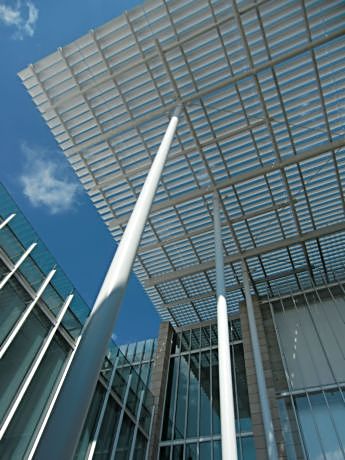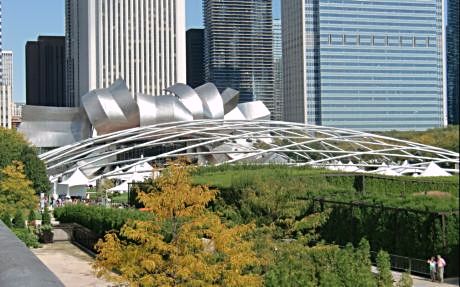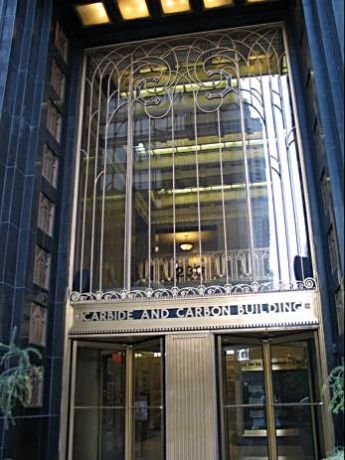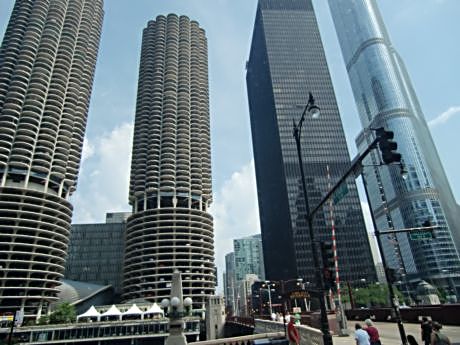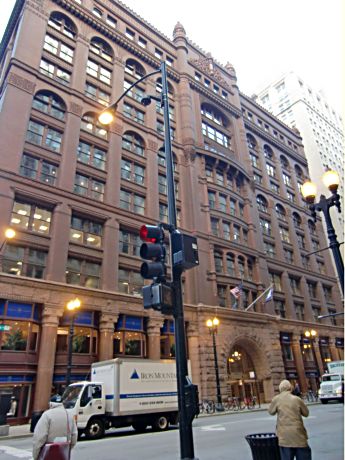Third in series on bucket-list towns where there is so much to see that that it is easy to miss some really good places. The series, begun with A Day in LA and continued with A Day in DC, highlights two attractions and includes a foodie stop plus an alternative attraction.
Combine art and architecture
Your start and end spots are Michigan Avenue from Monroe to Randolph Streets.
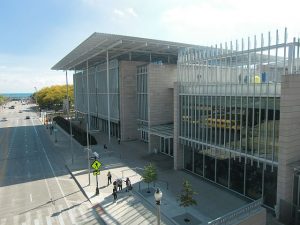
Of course you know that the Art Institute of Chicago has the finest French Impressionist collection outside of Paris.
But you might not know that as of December 2016 with the addition of the ‘New Contemporay’ it also has on exhibit an outstanding collection of contemporary art by Roy Lichtenstein, Andy Warhol, Jeff Koons, Jasper Johns, Cy Twombly, Robert Raushenberg and Takahi Murakami and other influential artists plus important photographs by Cindy Sherman and Richard Prince.
Comparable to that at the new Broad Museum in LA, the “New Contemporary” collection is on a long-term loan from philanthropists Stefan Edlis and Gael Neeson. See it in the Art Institute’s Modern Wing.
However, the museum doesn’t open until 10:30 a.m. You don’t need to enter with the mass waiting for it to open. So think petit déjeuner at Toni Patisserie at 65 E. Washington Street, a couple of blocks north of the museum.
‘The People’s Palace’
You are now perfectly placed to go across the street to “The People’s Palace” as the Chicago Cultural Center was sometimes called. Its south door at 78 E. Washington Street, is across from the Patisserie and is a perfect place to start the day after your croissant and latte.
Pull out the smart phone. The outside of the building is somewhat ponderous but inside is one amazing sight after another starting with the awesome mosaics that line the entryway’s Carrara marble staircase and walls.
Designed by the renowned architecture firm of Shepley, Rutan & Coolidge, Boston in a Beaux Arts style in 1897 it reflected the taste of the World’s Columbian Exposition in Chicago in 1893. The building housed the Chicago Public Library so look for literary and historical faces and saying in the mosaics.
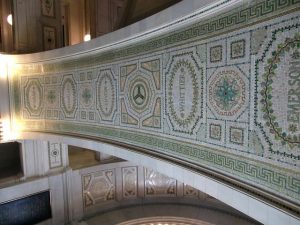
Photo by Jodie Jacobs
If you entered from Washington Street you might notice Roman style arches.If you walk through to the Randolph Street entrance you will see Greek influence and Doric columns.
On the National Register of Historic Places, its upstairs is filled with beautiful spaces. Look up when you reach the third floor on the Washington Street side. You are in the gorgeous Preston Bradley Hall capped by reportedly the world’s largest Tiffany Favrile glass dome. Surrounded by fish scales, the dome’s center has the signs of the zodiac.
Walk around the room to your left (west side) to get to the impressive Grand Army of the Republic Rotunda and its stained-glass dome. Go into the decorative GAR Memorial Hall.
Chicagoans come to the building for literary readings, dance and music programs, lectures, expos and concerts and to admire GAR rooms and Preston Bradley Hall.
They also come to see the ever changing art exhibits. So, take time to stroll to see what’s being shown around the building. Featured art shows are typically on the fourth floor and sometimes in the Chicago Room on Level Two. The main floor has exhibition space running along both the east and west sides of the building.
The ‘Modern Wing’
When ready to check out the Art Institute’s Modern Wing cross Michigan Avenue and walk south to the museum’s Monroe Street entrance. Designed by award-winning architect Renzo Piano, the wing opened in 2009 to mainly house modern European painting and sculpture and contemporary art collections. Tip: don’t try to do all of the Art Institute in one trip. The museum has nearly one million square feet.
At the Monroe Street Modern Wing entrance, you walk into the two-story, sky-lit Griffin Court.
The elevator up to Levels Two and Three take you to the museum’s 20th and 21st century collections. To see what’s on exhibit regarding architecture, go up to the café overlooking the Court. The room off the back is devoted to architecture.
Lunch break
When ready for sustenance, take an elevator from the short corridor on the west side off Griffin Court up to Terzo Piano, an upscale Italian restaurant guided by famed Chef Tony Mantuano. Reservations are highly recommended because lunch, from 11 to 3 p.m. fills fast (312-443-8650).
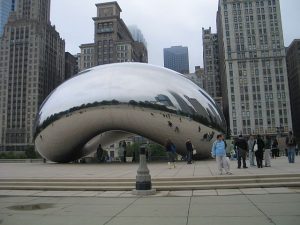
Even if you don’t snag a reservation go out onto the Bluhm Family Terrace outside the restaurant for a spectacular photo op. You can capture Chicago’s skyline, Millennium Park and Lake Michigan in your lens. Plus there usually are some sculptures on the Terrace.
From there take Piano’s unusual Nichols Bridgeway pedestrian walk over Monroe Street down to Millennium Park. About halfway down turn around and take a photo of the Modern Wing.
If you’re still looking for a lunch spot see if a table is available in Millennium Park’s Park Grill. It is street level (behind the ice rink in winter) at 11 N. Michigan Ave.
You’ll want to end near there anyway because “The Bean,” Anish Kapoor’s stainless steel “Cloud Gate,” is directly above the Park Grill. You have to take a selfie at The Bean and a photo of Chicago’s reflected skyline on it. Everyone does.

